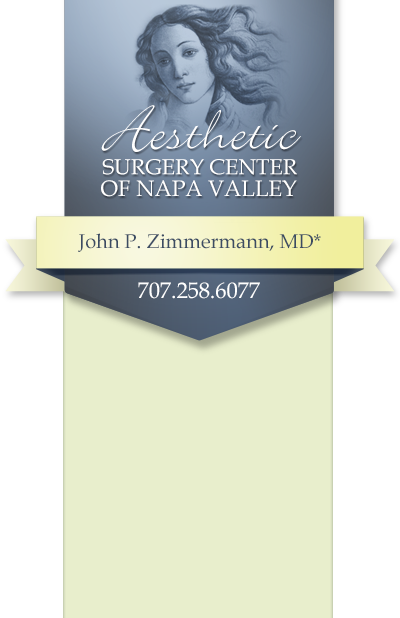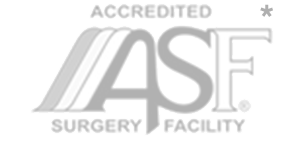Body
Tummy Tuck: A Better Recovery
 In the previous installment of our tummy tuck blog series, Dr. John P. Zimmermann educated patients on the mini tummy tuck and alternatives. In this final piece, our Napa Valley plastic surgeon will reveal his techniques for maximizing patient comfort during the recovery period.
In the previous installment of our tummy tuck blog series, Dr. John P. Zimmermann educated patients on the mini tummy tuck and alternatives. In this final piece, our Napa Valley plastic surgeon will reveal his techniques for maximizing patient comfort during the recovery period.
In order to minimize discomfort during a tummy tuck, I use a combination of general anesthesia, with a board certified Anesthesiologist, and local anesthesia. The medication that the anesthesiologist utilizes typically gets “out of your system” rapidly after the procedure, minimizing the possibility of nausea and a “hangover” feeling. After the patient is asleep, the first thing I do is inject a moderate amount of fluid mixed with local anesthetics and other medication into the surgical site. This lessens the need for more general anesthetic medications, as the area is fairly numb. It also markedly decreases the potential of bleeding.
Before closing the wound, I used to inject a long acting local anesthetic into the areas where muscle was tightened, an ordinarily painful area postop. Historically, this technique gave 12-24 hours of almost complete relief from marked discomfort.
I now use a new, innovative local anesthetic called Exparel that lasts for at least 72 hours wherever it is injected. Patients wake up rapidly, with little or no discomfort. No narcotics are usually necessary, and the patients leave the recovery area more rapidly than in the past, feeling clearer and more comfortable. This means markedly less discomfort in the days immediately following surgery, with a much greater ability to get up and move around…which is so very important in the first few days after a surgical procedure. Although pain pills are still sometimes necessary, their use is often kept to a minimum.
After patients have fully recovered, it is important that they continue to live a healthy life—a healthy diet, exercise, and watching their weight—to maintain their tummy tuck results for years to come.
Contact Our Office
To learn more information about the tummy tuck procedure and recovery at the Aesthetic Surgery Center of Napa Valley, please contact our office today.
Considering A “Mini” Tummy Tuck?
 In part 1 of our 3 part blog series on tummy tuck surgery, Dr. John P. Zimmermann described how the abdominoplasty procedure can be tailored to meet the needs of a wide variety of patients. In this second installment of the series, our Napa Valley plastic surgeon will compare the classic tummy tuck to the “mini” procedure.
In part 1 of our 3 part blog series on tummy tuck surgery, Dr. John P. Zimmermann described how the abdominoplasty procedure can be tailored to meet the needs of a wide variety of patients. In this second installment of the series, our Napa Valley plastic surgeon will compare the classic tummy tuck to the “mini” procedure.
Some of my patients at the Aesthetic Surgery Center of Napa Valley come into their initial tummy tuck (abdominoplasty) consultation wondering about limited or “mini” tummy tucks. Although they have become somewhat popular on the Internet, in reality, not many patients are truly good candidates for this procedure.
During a mini tummy tuck, liposuction is first utilized to diminish the volume of fat in the layer between the skin and the underlying muscle of the abdominal wall. Doing so alters and diminishes the blood supply to the overlying skin that comes through the muscle and through the fat. One then cannot extensively elevate the skin and residual fat off of that muscle layer, or the skin and fat will not survive. Thus, if a patient requires a significant amount of skin to be removed, a longer incision is necessary, and liposuction of the abdominal fat is much more conservative.
The second facet of a mini tuck is a short incision, extending not far beyond the extent of the pubic hair. Obviously, again, a patient with a lot of skin requires a longer incision to remove that skin.
The third facet of a mini tummy tuck is tightening the deep connective tissue (“fascia”) that supports the muscles. This cannot be done as extensively as with a classic abdominoplasty, usually only from the navel downwards.
Ideal candidates for this procedure are men and women who have a minimal amount of excess skin, only a moderate amount (or less) of abdominal wall fat, and mild laxity of the abdominal wall muscles, especially from the navel downwards. Patients with a lot of excess skin and severe laxity of the muscles are better treated with the classic approach in order to maximize their aesthetic outcome.
At my Plastic Surgery practice, I have had patients who are of average weight, in good health, and who have never been pregnant, yet require a full abdominoplasty. Similarly, I have seen patients who have had five or six children, but only require a mini tummy tuck. This difference may be genetic in origin.
Since each patient has a unique body structure and individual cosmetic concerns, what is required to achieve the look they desire is very case specific. There are no standard rules of practice that can be applied to each and every patient that walks through the door. A detailed and lengthy conversation is always necessary to ensure that my patients and I have the same goals and expectations going into any surgical procedure.
For some of my patients, I recommend combining the abdominal procedure with liposuction to really enhance the natural contours of the body. Breast reduction, breast implants, or breast augmentation are also often combined with a tummy tuck for a more complete body rejuvenation.
In the coming weeks, return to our blog for the final installment of our 3 part series on tummy tucks. Dr. Zimmermann will explore advances made toward the tummy tuck recovery process that have dramatically improved patient comfort and mobility in the days after the procedure.
Contact Our Practice
To learn more about how a tummy tuck can help you achieve a tighter, more toned, and flatter stomach, please contact our office today.
Is Tummy Tuck Surgery Right for Me?
 In part 1 of our 3 part blog series, John P. Zimmermann M.D. discusses how abdominoplasty can help a variety of patients with different conditions achieve a more toned and flatter stomach.
In part 1 of our 3 part blog series, John P. Zimmermann M.D. discusses how abdominoplasty can help a variety of patients with different conditions achieve a more toned and flatter stomach.
For my tummy tuck patients at the Aesthetic Surgery Center of Napa Valley, I use the initial consultation to not only examine the patients abdominal anatomy, but also to delineate and discuss their specific desires and expectations. There is no universal tummy tuck (abdominoplasty) technique, and we treat all types of people with different anatomy and different desires. There may be the patient with only an excess of fat, good underlying muscle tone, and reasonable elasticity of the overlying skin. On the opposite side of the spectrum, there may be a patient with severely stretched out skin and muscular tissues, often post pregnancy or post significant weight loss. In the “middle” are those patients with minimal skin excess, a moderate amount of fat, and a loss of elasticity in the lower abdominal wall muscles. Massive weight loss patients are an entity onto themselves, but fall closer to the severely stretched out patients. There is a different procedure indicated for each of these patient types.
Abdominoplasty patients can be in their 20’s or their 70’s, since a patient’s candidacy depends on their desires (and underlying health), and not solely their age.
In the distant past, we used to perform a standard tummy tuck on every patient who sought a tightened, toned and flatter stomach, with less overall fat. Today, with liposuction as another effective treatment possibility, we take the time to educate our patients on each procedure and the results in their specific situation…allowing them to make the final decision, with our guidance.
Liposuction is used to reduce the amount of fat in the external abdominal layer, but won’t necessarily tighten the skin, although the skin does shrink to some degree, in order to accommodate the lessened volume. If your skin is wrinkled before, it will remain so.
The “full” or “classic” abdominoplasty essentially removes the excess skin and fat (usually all of that between the belly button and the pubic hair) while also tightening the connective tissue (“fascia”) that holds the abdominal wall muscles together.
When a tummy tuck is correctly performed, one can even define the waistline, resulting in an improved contour and a flat abdomen. Overall, the cosmetic improvements achieved by a tummy tuck are much more comprehensive than with liposuction alone.
In the second installment of our blog series, Dr. Zimmermann will continue with a post about the “mini abdominoplasty” or “mini tummy tuck” fad. Be sure to check back to our blog soon.
Contact Our Office
To learn more about how a tummy tuck can help you achieve your aesthetic goals, or to schedule a consultation with Dr. Zimmermann, please contact our office today.





